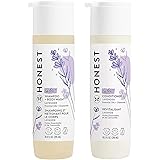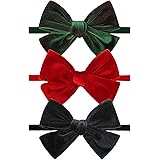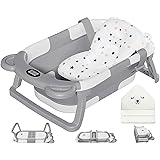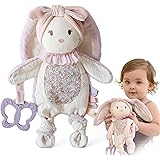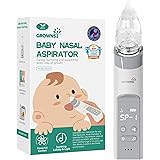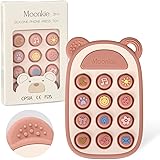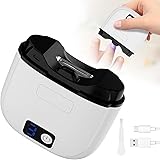Navigating the bewildering array of products available for a newborn can often feel like an insurmountable challenge for expectant or new parents. The sheer volume of choices, coupled with conflicting advice, frequently leads to overwhelm, making it difficult to discern what is truly essential from what might be merely convenient or superfluous. However, a strategically curated list of newborn baby essentials can significantly alleviate this stress, ensuring that focus remains on the joyous anticipation of welcoming a new family member, rather than on product acquisition anxieties. This comprehensive guide, complementing the insights potentially offered in the accompanying video, aims to demystify the process, presenting a meticulously researched compilation of must-have items for the initial weeks and months of an infant’s life.
Establishing a Safe and Serene Nursery: Essential Sleeping Solutions for Infants
The cornerstone of a newborn’s well-being is often considered to be adequate sleep, necessitating a safe and conducive sleeping environment. A sturdy crib, conforming to current safety standards such as those set by the Consumer Product Safety Commission (CPSC), is undeniably paramount. It is imperative that the crib mattress fits snugly, without gaps larger than two fingers, thereby preventing entrapment risks. Furthermore, a firm mattress is widely recommended to mitigate the risk of Sudden Infant Death Syndrome (SIDS), a critical consideration for all caregivers. While aesthetics are often prioritized, functionality and safety must always take precedence in nursery setup.
For parents desiring their infant closer during the initial months, a bassinet or co-sleeper offers a practical alternative to a full-sized crib. These smaller sleep spaces are designed for bedside use, facilitating nighttime feedings and comforting while maintaining a separate, safe sleep surface for the baby. Often, these units are easily portable, allowing the infant to be moved between rooms with relative ease. Regardless of the chosen sleep solution, the bare crib concept is championed by pediatricians: no bumpers, loose blankets, pillows, or stuffed animals should ever be placed in the infant’s sleep area. A simple fitted sheet, designed specifically for the mattress, is all that is typically required.
Swaddles and sleep sacks are also considered indispensable for newborn infants, aiding in their transition to external world sleep. Swaddling helps to replicate the snugness of the womb, diminishing the startle reflex that often disrupts sleep. Conversely, sleep sacks provide warmth without the inherent risks associated with loose blankets, which can obstruct an infant’s airway. These items are available in various Tog ratings, enabling parents to select appropriate options based on ambient room temperature, thereby preventing overheating or under-heating, which are both critical factors in infant comfort and safety.
Navigating Feeding and Diapering with Confidence: Critical Newborn Baby Essentials
For feeding, regardless of whether breastfeeding or formula feeding is pursued, a selection of specialized items is generally required. If formula feeding is opted for, a collection of bottles, teats with varying flow rates, and a reliable sterilizer or dish soap for thorough cleaning are imperative. Anti-colic bottles, designed to reduce air intake during feeding, are frequently favored by parents whose infants experience gastric discomfort or regurgitation. Conversely, for breastfeeding mothers, a breast pump (manual or electric), milk storage bags, nursing pillows, and lanolin cream for nipple care are often considered invaluable aids in establishing and maintaining lactation.
Diapering, a constant in a newborn’s life, necessitates a strategic approach to supplies. Whether disposable or cloth diapers are chosen, a substantial quantity will be consumed daily; typically, 10-12 diapers are used by a newborn each day. Consequently, a large stock is consistently recommended to prevent unexpected shortages. Complementing diapers, hypoallergenic wet wipes are essential for gentle cleansing, particularly those formulated for sensitive skin without harsh chemicals. A diaper rash cream, containing zinc oxide or petroleum jelly, is also a critical preventative and therapeutic measure against skin irritation. A dedicated changing mat, easily wiped clean, along with a small bin for soiled disposables, streamlines the diaper changing process.
For parents embracing the sustainable approach championed by brands like SuperBottoms, a comprehensive cloth diapering system would be meticulously planned. This typically involves a stash of absorbent cloth diapers (all-in-ones, pockets, or prefolds with covers), wet bags for soiled diapers on the go, a dedicated diaper pail or large wet bag for home storage, and a robust laundry routine adapted for cloth. Specialized cloth diaper detergents are often recommended to ensure thorough cleaning without damaging the fabric or leaving residues that could irritate the baby’s delicate skin or diminish absorbency. The initial investment might be higher, however, long-term cost savings and environmental benefits are frequently cited as significant advantages.
Ensuring Comfort and Cleanliness: Bathing, Grooming, and Clothing
Bathing a newborn, while sometimes intimidating for new parents, is made significantly easier with the right equipment. A small infant bathtub, specifically designed to support a slippery newborn safely, is a critical item, often featuring non-slip surfaces and ergonomic contours. Mild, tear-free baby shampoo and body wash, formulated for sensitive skin, are preferable to adult products. Soft hooded towels, designed to keep a baby warm after bathing, are also considered essential, as are a soft-bristled baby brush and a gentle baby lotion to combat dryness. Water temperature, which should be checked with a bath thermometer or the elbow, must be carefully controlled, typically around 98-100°F (37-38°C).
Grooming essentials extend beyond bathing to include nail care and nasal hygiene. Baby nail clippers or a fine nail file are needed to keep tiny nails trimmed, preventing accidental scratches to their delicate skin. A nasal aspirator, whether a bulb syringe or a more advanced electric model, becomes invaluable during periods of congestion, facilitating easier breathing for the infant. Regular cleaning of these items is vital to prevent the spread of germs. Furthermore, a soft-bristled baby brush can be used for gently massaging the scalp, which is sometimes reported to alleviate cradle cap, a common skin condition in infants.
Clothing for newborns demands careful consideration of both comfort and practicality. A collection of bodysuits or onesies, particularly those with snap closures at the crotch, simplifies diaper changes and dressing. Sleepers or sleepsuits, often with integrated footies and fold-over mitts, provide complete coverage for nighttime wear, ensuring warmth without loose blankets. It is often recommended that clothes be made from soft, breathable fabrics like organic cotton, which minimize skin irritation. Given the frequency of spit-ups and diaper blowouts, a substantial quantity of each item is required, as multiple changes per day are not uncommon for a newborn. Practicality often dictates a preference for zippers over buttons, especially during late-night changes, though some parents may prefer the former for security. Sizes often include “newborn” and 0-3 months, with the latter frequently offering a slightly longer wear period.
Health, Safety, and Travel: Indispensable Newborn Must-Haves
Safety considerations are paramount in newborn care, commencing with the selection of a car seat. A properly installed infant car seat, designed for rear-facing travel, is not merely an essential but a legal requirement for transporting a baby home from the hospital and for all subsequent car journeys. It is critical that parents familiarize themselves with the car seat’s instructions and ensure correct installation, often verified by a certified car seat technician. Moreover, a comprehensive first-aid kit, containing a baby-specific thermometer, infant-appropriate pain reliever (after consulting a pediatrician), saline drops for nasal congestion, and sterile gauze, should always be readily accessible. Regular checks of the home environment for potential hazards are also advised, establishing a secure space for the growing infant.
Beyond the car seat, other travel and mobility essentials significantly enhance convenience for parents. A robust stroller system, whether a travel system that accommodates the infant car seat or a separate bassinet stroller, facilitates outings and walks. The selection of a lightweight, easily foldable model is frequently preferred for urban environments or parents who are often on the go. Additionally, a baby carrier or wrap allows for skin-to-skin contact and hands-free mobility, proving particularly beneficial during the “fourth trimester” when infants often desire close physical proximity. These carriers should support the baby in an ergonomic ‘M’ position, preventing hip dysplasia. Investing in these travel essentials early can greatly simplify parental routines, allowing for greater freedom and flexibility in daily activities.
In summation, equipping oneself with the fundamental newborn baby essentials is not about acquiring every gadget on the market; rather, it is about thoughtfully selecting items that prioritize the infant’s safety, comfort, and developmental needs, while simultaneously supporting the parents’ well-being. A carefully curated list ensures that resources are allocated judiciously, focusing on high-quality, functional products that genuinely contribute to a smoother transition into parenthood. These key items, which range from safe sleeping solutions to efficient feeding tools and indispensable travel gear, are designed to lay a solid foundation for the initial phase of an infant’s life, alleviating common stressors associated with welcoming a new baby.


